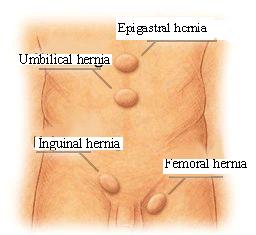Adams Kirurgia Kliinik
Bariatric, postbariatric and general surgery
Hernias
 Hernias are one of the most common surgical pathologies. Hernia represents a protrusion of the peritoneum (hernia sac) through a defect in the abdominal wall (hernia orifice).
Hernias are one of the most common surgical pathologies. Hernia represents a protrusion of the peritoneum (hernia sac) through a defect in the abdominal wall (hernia orifice).
Hernias are classified into inguinal, femoral, umbilical, anterior abdominal wall and incisional hernias depending upon the location and cause of the hernia (previous surgery, trauma, lifting of heavy weights). Surgery is the only possible treatment of an hernia because the hernia orifice never closes spontaneously.
The best time for operation is when the complaints are still mild. In case of narrow hernia orifice, hernia sac and its contents can get trapped in it, causing ileus and requiring emergency operation. The surgery is performed under local, general or spinal anaesthesia. Hernia repair includes closure of the hernia orifice with sutures or special mesh made of artificial material. The latter is sometimes also-called “tension-free” hernia repair. The advantage of this method is the relatively low number of hernia recurrences, less postoperative pain, and shorter duration of the decrease in the quality of life due to the operation. It is recommended to abstain from lifting heavy weights for 3 months after the surgery. Moderate physical exercise is usually allowed from the fourth postoperative week. In case of large hernias of the anterior abdominal wall it’s advisable to wear a special abdominal band (bandage) for approximately 2 months.
